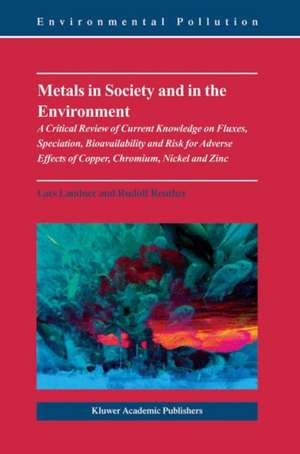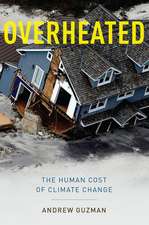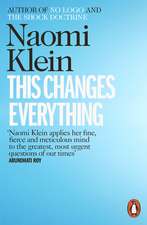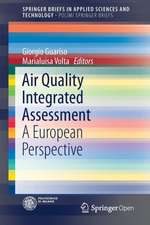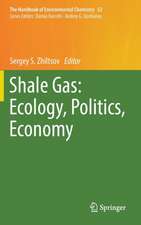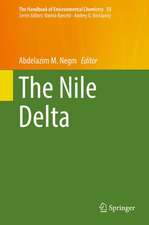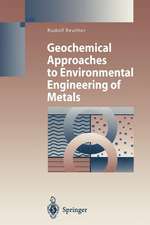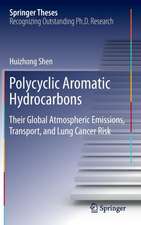Metals in Society and in the Environment: A Critical Review of Current Knowledge on Fluxes, Speciation, Bioavailability and Risk for Adverse Effects of Copper, Chromium, Nickel and Zinc: Environmental Pollution, cartea 8
Autor Lars Landner, Rudolf Reutheren Limba Engleză Hardback – sep 2004
Recent scientific advances now offer an improved understanding of the mechanisms and factors controlling the intricate behaviour of trace metals, their interactions, uptake and effect in natural systems. Traditional risk assessment methods usually built on quite crude toxicity tests done in unrealistic "laboratory waters", and did not consider natural conditions. In contrast, modern approaches now increasingly involve the full utilisation of site-specific factors, which are decisive for the formation of bioavailable and toxic metal forms.
Audience: This book provides excellent guidance not only to scientists focusing on the assessment of the ecological risk of metals, but also to authorities, decision makers in industry, educational staff and the interested public concerned with the occurrence and fate of trace metals.
Din seria Environmental Pollution
- 15%
 Preț: 640.06 lei
Preț: 640.06 lei - 18%
 Preț: 960.13 lei
Preț: 960.13 lei - 24%
 Preț: 1066.78 lei
Preț: 1066.78 lei - 18%
 Preț: 953.35 lei
Preț: 953.35 lei - 18%
 Preț: 944.82 lei
Preț: 944.82 lei - 18%
 Preț: 965.34 lei
Preț: 965.34 lei - 18%
 Preț: 1240.16 lei
Preț: 1240.16 lei - 18%
 Preț: 1225.79 lei
Preț: 1225.79 lei - 18%
 Preț: 1826.54 lei
Preț: 1826.54 lei - 18%
 Preț: 945.79 lei
Preț: 945.79 lei - 18%
 Preț: 1218.83 lei
Preț: 1218.83 lei - 18%
 Preț: 948.29 lei
Preț: 948.29 lei - 18%
 Preț: 956.50 lei
Preț: 956.50 lei - 18%
 Preț: 955.88 lei
Preț: 955.88 lei - 18%
 Preț: 947.50 lei
Preț: 947.50 lei - 18%
 Preț: 2103.87 lei
Preț: 2103.87 lei - 18%
 Preț: 963.91 lei
Preț: 963.91 lei - 18%
 Preț: 969.61 lei
Preț: 969.61 lei - 15%
 Preț: 642.51 lei
Preț: 642.51 lei - 5%
 Preț: 1301.44 lei
Preț: 1301.44 lei - 18%
 Preț: 939.00 lei
Preț: 939.00 lei - 15%
 Preț: 644.95 lei
Preț: 644.95 lei - 18%
 Preț: 1121.43 lei
Preț: 1121.43 lei - 18%
 Preț: 955.08 lei
Preț: 955.08 lei - 18%
 Preț: 1333.42 lei
Preț: 1333.42 lei - 5%
 Preț: 1098.24 lei
Preț: 1098.24 lei
Preț: 956.81 lei
Preț vechi: 1166.84 lei
-18% Nou
Puncte Express: 1435
Preț estimativ în valută:
183.14€ • 199.00$ • 153.94£
183.14€ • 199.00$ • 153.94£
Carte tipărită la comandă
Livrare economică 21 aprilie-05 mai
Preluare comenzi: 021 569.72.76
Specificații
ISBN-13: 9781402027406
ISBN-10: 1402027400
Pagini: 428
Ilustrații: XX, 407 p.
Dimensiuni: 156 x 232 x 28 mm
Greutate: 0.77 kg
Ediția:2004
Editura: SPRINGER NETHERLANDS
Colecția Springer
Seria Environmental Pollution
Locul publicării:Dordrecht, Netherlands
ISBN-10: 1402027400
Pagini: 428
Ilustrații: XX, 407 p.
Dimensiuni: 156 x 232 x 28 mm
Greutate: 0.77 kg
Ediția:2004
Editura: SPRINGER NETHERLANDS
Colecția Springer
Seria Environmental Pollution
Locul publicării:Dordrecht, Netherlands
Public țintă
ResearchCuprins
Executive Summary and Conclusions.- Purpose of This Review.- Global Extraction, Production and Consumption.- Metal Cycles in Defined Geographical Areas: Europe, The Netherlands and Stockholm.- Critical Steps in Metal Fluxes from Society to the Environment – Some Case Studies.- Speciation, Mobility and Bioavailability of Metals in the Environment.- Biotic Ligand Models.- Toxic and Other Adverse Biological Effects of Trace Metals.
Textul de pe ultima copertă
In 2002, the Swedish Metal Information Task Force (MITF) engaged the Environmental Research Group (MFG) to update previous monographs on copper, zinc and major alloying metals (such as chromium, nickel and molybdenum) in society and in the environment. This book presents new results on metal fluxes from society to the environment, on metal speciation in water, soil and sediment, and its interpretation in terms of mobility, biological uptake and toxicity. The scientific fundamentals of new approaches, like the Acid Volatile Sulphide (AVS) concept to predict metal bioavailability in sediments, and the Biotic Ligand Model (BLM) to calculate the toxicity of metals to aquatic organisms, are critically evaluated, with a focus on copper, nickel, zinc, and, in part, chromium.
Recent scientific advances now offer an improved understanding of the mechanisms and factors controlling the intricate behaviour of trace metals, their interactions, uptake and effect in natural systems. Traditional risk assessment methods usually built on quite crude toxicity tests done in unrealistic "laboratory waters", and did not consider natural conditions. In contrast, modern approaches now increasingly involve the full utilisation of site-specific factors, which are decisive for the formation of bioavailable and toxic metal forms.
Audience
This book provides excellent guidance to both scientists focusing on the assessment of the ecological risk of metals, and to authorities, decision makers in industry, educational staff and the interested public concerned with the occurrence and fate of trace metals.
Recent scientific advances now offer an improved understanding of the mechanisms and factors controlling the intricate behaviour of trace metals, their interactions, uptake and effect in natural systems. Traditional risk assessment methods usually built on quite crude toxicity tests done in unrealistic "laboratory waters", and did not consider natural conditions. In contrast, modern approaches now increasingly involve the full utilisation of site-specific factors, which are decisive for the formation of bioavailable and toxic metal forms.
Audience
This book provides excellent guidance to both scientists focusing on the assessment of the ecological risk of metals, and to authorities, decision makers in industry, educational staff and the interested public concerned with the occurrence and fate of trace metals.
Caracteristici
Presents new results and approaches for assessment of metals in society and the environment
